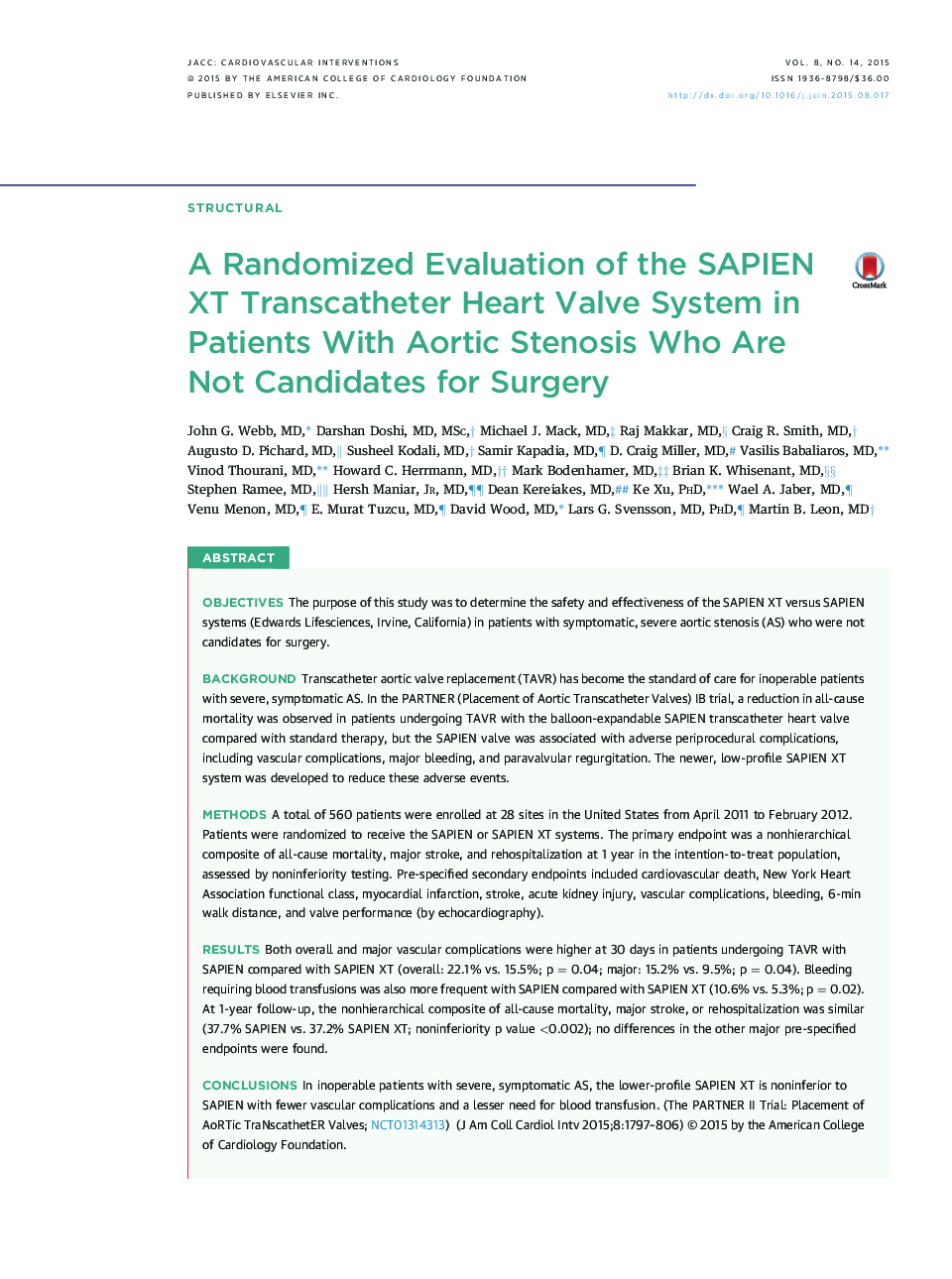| Article ID | Journal | Published Year | Pages | File Type |
|---|---|---|---|---|
| 2939839 | JACC: Cardiovascular Interventions | 2015 | 10 Pages |
ObjectivesThe purpose of this study was to determine the safety and effectiveness of the SAPIEN XT versus SAPIEN systems (Edwards Lifesciences, Irvine, California) in patients with symptomatic, severe aortic stenosis (AS) who were not candidates for surgery.BackgroundTranscatheter aortic valve replacement (TAVR) has become the standard of care for inoperable patients with severe, symptomatic AS. In the PARTNER (Placement of Aortic Transcatheter Valves) IB trial, a reduction in all-cause mortality was observed in patients undergoing TAVR with the balloon-expandable SAPIEN transcatheter heart valve compared with standard therapy, but the SAPIEN valve was associated with adverse periprocedural complications, including vascular complications, major bleeding, and paravalvular regurgitation. The newer, low-profile SAPIEN XT system was developed to reduce these adverse events.MethodsA total of 560 patients were enrolled at 28 sites in the United States from April 2011 to February 2012. Patients were randomized to receive the SAPIEN or SAPIEN XT systems. The primary endpoint was a nonhierarchical composite of all-cause mortality, major stroke, and rehospitalization at 1 year in the intention-to-treat population, assessed by noninferiority testing. Pre-specified secondary endpoints included cardiovascular death, New York Heart Association functional class, myocardial infarction, stroke, acute kidney injury, vascular complications, bleeding, 6-min walk distance, and valve performance (by echocardiography).ResultsBoth overall and major vascular complications were higher at 30 days in patients undergoing TAVR with SAPIEN compared with SAPIEN XT (overall: 22.1% vs. 15.5%; p = 0.04; major: 15.2% vs. 9.5%; p = 0.04). Bleeding requiring blood transfusions was also more frequent with SAPIEN compared with SAPIEN XT (10.6% vs. 5.3%; p = 0.02). At 1-year follow-up, the nonhierarchical composite of all-cause mortality, major stroke, or rehospitalization was similar (37.7% SAPIEN vs. 37.2% SAPIEN XT; noninferiority p value <0.002); no differences in the other major pre-specified endpoints were found.ConclusionsIn inoperable patients with severe, symptomatic AS, the lower-profile SAPIEN XT is noninferior to SAPIEN with fewer vascular complications and a lesser need for blood transfusion. (The PARTNER II Trial: Placement of AoRTic TraNscathetER Valves; NCT01314313)
